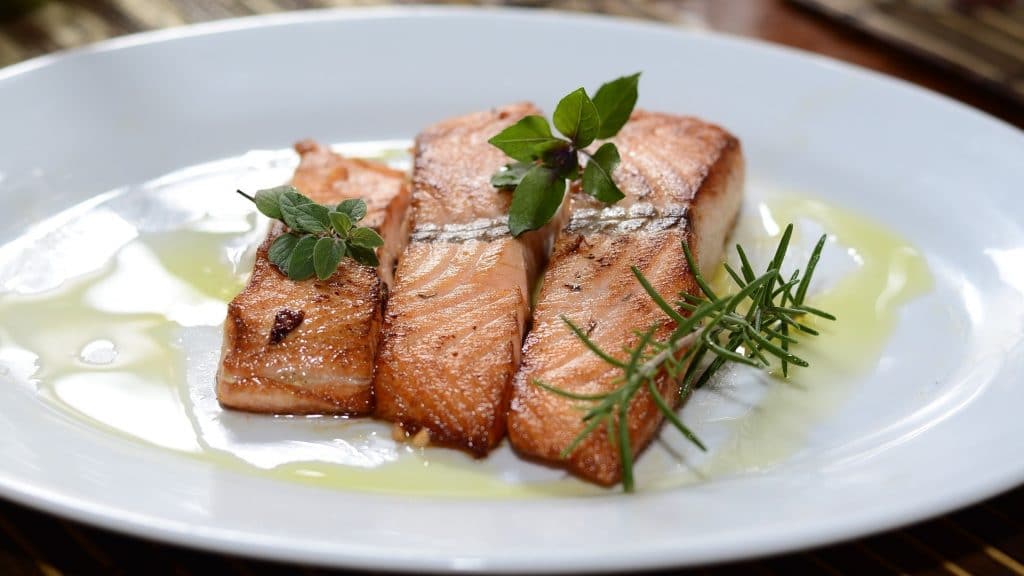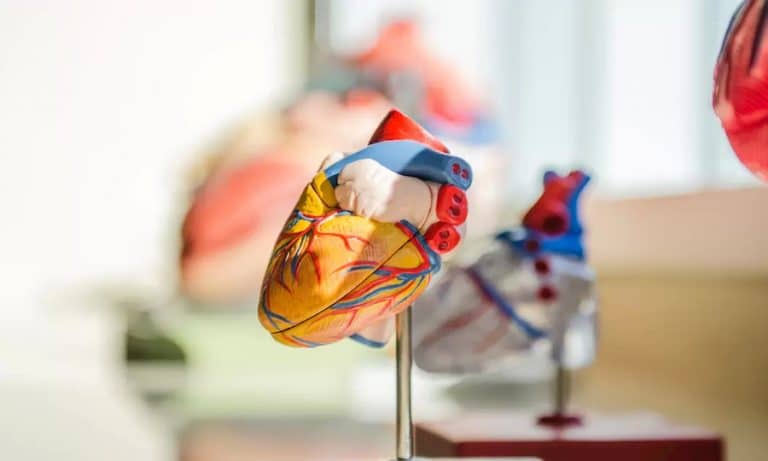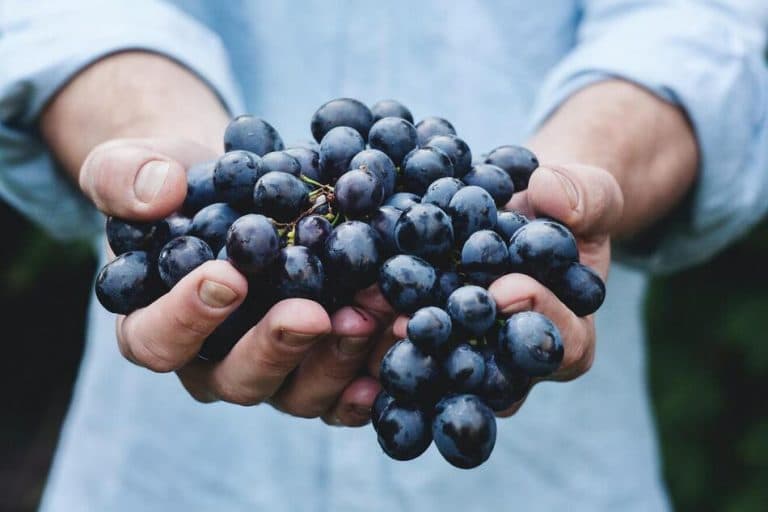28 Vitamin B5 Foods for Staying Healthy & Energetic in 2024

Vitamin B5 (pantothenic acid) is an essential nutrient that plays a significant role in our organism. It belongs to the B-complex of vitamins, all responsible for converting food into energy our body needs to function properly. So to stay healthy, you need to enrich your everyday diet with vitamin B5 foods. Here you can find plenty of ideas for your daily menu.
What Is Vitamin B5?
Like other B vitamins, B5 is water-soluble, meaning that the body cannot store it in large amounts. That’s why you need to consume foods containing this irreplaceable nutrient regularly. Notably, one of the primary pantothenic acid uses is to help synthesize coenzyme A (CoA), which is essential for various metabolic processes.
Vitamin B5 Benefits
Vitamin B5 has a range of essential functions:
- It is responsible for breaking down proteins, fats, and carbohydrates.
- It converts them into usable energy.
- It contributes to the production of red blood cells.
- Another vitamin B5 function is maintaining a healthy digestive system and enabling the body to use other vitamins.
Vitamin B5 plays a significant role in synthesizing coenzyme A, which is crucial for synthesizing fatty acids. Thanks to CoA, the liver can metabolize some drugs and toxins. According to some research, vitamin B5 health benefits also include lowering bad cholesterol.
What’s more, it can reduce the risk of heart attack and stroke. There are vitamin B5 benefits for the skin as well. As it builds moisture levels, it is a critical ingredient of many skincare products. So, people also use vitamin B5 for the skin to treat acne. As you can see, there are many benefits of this potent vitamin.
Vitamin B5 Foods
A wide variety of foods contain vitamin B5 in different amounts. Various kinds of meat and whole grains, for instance, are foods rich in B5. Some fruits and vegetables are excellent sources of pantothenic acid, too.
What’s more, the nutrient is added to many foods and beverages, such as breakfast cereals and energy drinks. That said, some of the pantothenic acid content may be lost in food processing.
Here we will provide you with an extensive vitamin B5 foods list, which can serve you as a good starting point when devising your eating plan. Read on!
Beef Liver
What is the best source of vitamin B5? — Beef liver may be the answer since a three-ounce serving of boiled beef liver provides you with 166% of the vitamin’s DV. On the other hand, lean meat has a lower vitamin B5 content — three ounces of broiled, 85% ground beef supply 12% of the vitamin’s DV.
Chicken
To reap pantothenic acid benefits, you should include chicken in your eating plan. As little as three ounces of roasted, skinless chicken breast will cover approximately 26% of pantothenic acid’s DV. In addition, this type of meat is an excellent source of other B vitamins, such as niacin and vitamin B6.
Pork
Another valuable addition to the foods with pantothenic acid is pork. A 3.5-ounce pork chop covers 20% of the vitamin’s DV. Moreover, pork is packed with other vitamins, such as thiamine, riboflavin, and niacin. Note that you should go for leaner parts of this meat.
Tuna
To our delight, fish also belong to foods high in pantothenic acid. For instance, three ounces of cooked bluefin tuna serve 24% of vitamin B5’s DV. This great source of omega-3 fatty acids also belongs to vitamin B6 foods. In addition, it is rich in essential minerals such as selenium and potassium.
Salmon
Wild Atlantic salmon is an excellent pantothenic acid source. Namely, 3.5 ounces of it will cover 19% of the vitamin’s recommended dietary intake (RDI). Just like tuna, it is also an excellent source of omega-3 fatty acids and various minerals.
Trout
Trout is another type of fish that belongs to foods high in vitamin B5. Notably, if you eat one 5-ounce trout fillet, you will cover 30% of the vitamin’s DV. This freshwater fish is also rich in other B vitamins, including vitamin B12, riboflavin, and niacin, and it is an excellent dietary source of iodine.
Shiitake Mushrooms
There are many vitamin B5 foods vegetarian people can add to their eating plan. Shiitake mushrooms are one of them. A cup of cooked Shiitake mushroom pieces covers 104% of pantothenic acid’s DV. These mushrooms are a healthy option as they are low in calories and rich in fiber and many other nutrients.
White Mushrooms
A list of foods that contain pantothenic acid won’t be complete without white mushrooms. In half a cup of white, stir-fried, sliced mushrooms, you will get 16% of vitamin B5’s DV. Moreover, they are rich in other B vitamins, such as riboflavin and niacin. As for their benefits, white mushrooms will keep your bones healthy as they are a great source of copper and phosphorus.
Eggs
Other pantothenic acid foods are eggs. One large hard-boiled egg will provide you with 7% of vitamin B5’s DV. Moreover, eggs are rich in selenium, vitamin B12, vitamin B2. They also contain minerals such as iron, zinc, and copper. Most importantly, eggs are a great source of inexpensive, high-quality protein.
Milk
Milk is a highly nutritious type of food as it’s an excellent source of protein and numerous minerals and vitamins. It is also included in the pantothenic acid foods’ sources. In fact, one cup of milk (2% milkfat) will provide you with 18% of vitamin B5’s DV. Moreover, it is high in vitamin A, calcium, phosphorus, and vitamin D.
Yogurt
Yogurt is another dairy product that is an excellent source of vitamin B5 — pantothenic acid. Namely, a 5.3-ounce container of nonfat vanilla Greek yogurt serves 12% of the vitamin’s DV. On top of that, vitamin B3 and vitamin B12 are also found in plain yogurt. In addition, it is a rich source of calcium and phosphorus, just like milk.
Cheddar Cheese
Cheddar cheese is a pantothenic acid food source, even though the vitamin content is lower compared to other dairy products. Eating 1.5 ounces of this cheese will get you 4% of the vitamin’s DV. That said, it will provide you with other vitamins and minerals, such as riboflavin, vitamin A, and phosphorus.
Sunflower Seeds
These seeds rightfully belong to vitamin B5-rich foods, as 1/4 of a cup of these seeds serves 48% of pantothenic acid’s DV. In addition, sunflower seeds are incredibly high in vitamin E, often referred to as “a fountain of youth.”
Peanuts
Peanuts are highly nutritious, thanks to their high content of various minerals and vitamins. They also belong to pantothenic acid foods. For example, if you eat 1/4 of a cup of oil-roasted peanuts, you will cover 10% of the vitamin’s DV. In addition, they are an excellent source of folate, niacin, and vitamin E.
Fortified Breakfast Cereals
Fortified food contains added minerals and vitamins that aren’t naturally present in them. Therefore, fortification improves people’s levels of specific nutrients, with cereals being one of the most commonly fortified foods. Astoundingly, it is possible to get 100% of the vitamin’s DV with some of these cereals.
Oats
Oats are B5-rich foods, too. In other words, half a cup of regular and quick oats cooked with water serves 8% of vitamin B5’s DV. All in all, oats are one of the healthiest grains, full of vitamins, minerals, fiber, and antioxidants. Moreover, some of their health benefits involve lowering blood sugar levels, aiding weight loss, and reducing the risk of heart disease.
Brown Rice
Brown rice is another one of the B5 sources. Notably, half a cup of cooked medium-grain brown rice will provide you with 8% of the vitamin’s DV. In addition, brown rice is a rich source of dietary fiber, reducing the risk of heart disease death. It also contains magnesium, making you less prone to stroke and heart disease.
Potatoes
Many vegetables are great vitamin B5 sources, including potatoes. For instance, one medium russet potato (baked with skin) will provide you with approximately 14% of the vitamin’s DV. What’s more, potatoes are a rich source of vitamin B6, potassium, and manganese.
Broccoli
Broccoli is another healthy vegetable full of nutrients that belongs to foods rich in pantothenic acid. Namely, half a cup of boiled broccoli will get you 10% of this vitamin’s DV. In addition, this low-calorie vegetable is rich in various minerals and vitamins, including vitamin C, manganese, potassium, folate, vitamin A, and vitamin K.
Peas
Peas are yet another valuable addition to foods containing vitamin B5. For example, one cup of podded peas will get you 27% of the vitamin’s DV. In addition, peas are rich in zinc, manganese, folate, and vitamins A, C, E, and K.
Yellow Sweet Corn
Yellow sweet corn landed itself a spot among sources of B5, too. One cup of yellow sweet corn covers 24% of pantothenic acid’s DV. It is also high in thiamin and niacin. Moreover, sweet corn is an excellent source of dietary fiber and several healthy minerals, such as manganese and phosphorus.
Acorn Squash
Various types of squashes belong to pantothenic acid foods, too. One cup of baked acorn squash provides you with 21% of the vitamin’s DV. What’s more, this delicious veggie is rich in magnesium, fiber, vitamin A, thiamine, potassium, and manganese. Additionally, it may promote overall health and protect against heart disease and type 2 diabetes.
Avocados
This fruit is yet another brilliant addition to your B5 foods diet. Half of a raw avocado will cover 20% of vitamin B5’s DV. They are also a great source of vitamin C, vitamin K, folate, potassium, and copper and may protect against heart disease and lower blood pressure.
Guavas
Guavas are very nutritious thanks to a range of vitamins and minerals they contain, and they are also considered vitamin B5 foods. With one cup of this fruit, you will get 15% of the vitamin’s DV. In addition, they are high in vitamin C, folate, and vitamin A. They are also a good source of potassium and copper.
Pomegranates
Besides being a vitamin C bomb, pomegranates landed themselves a spot on the list of vitamin B5 foods. One cup of this fruit covers 13% of the vitamin’s DV. Pomegranates are also loaded with vitamin K, and they are a great source of folate and thiamine. In addition, they protect against cancer, heart disease and help with arthritis.
Pink Grapefruit
Grapefruit is also considered vitamin B5 food. One cup of grapefruit sections supplies 13% of the vitamin’s DV. Furthermore, it is a good source of other vitamins, like vitamin A, thiamin, and folate. It also might help with losing weight.
Bananas
Bananas are yet another fruit that made it to foods high in B5. Notably, one cup of sliced bananas will cover 10% of the vitamin’s DV. This fruit is also a great source of fiber, vitamin C, and vitamin B6, and it is known for improving digestive health.
Raspberries
Raspberries are great for your health since they are not only foods with B5, but they are also high in vitamin C and manganese. Notably, 3.5 ounces of frozen raspberries cover 7% of pantothenic acid’s DV. Furthermore, these berries help with heart function, lower blood pressure, and prevent stroke.
Thanks to this list, now you know what foods have vitamin B5. As you can see, a wide range of meats, fruits, and vegetables are rich in this critical nutrient, so it won’t be difficult for you to create a healthy eating plan with a sufficient amount of pantothenic acid.
Recommended Daily Intake of B5 Vitamin
The Food and Nutrition Board (FNB) at the Institute of Medicine of the National Academies provided the Dietary Reference Intakes for all the nutrients, including vitamin B5.
However, since the FNB couldn’t establish Recommended Dietary Allowances or Estimated Average Requirement for pantothenic acid, it defined Adequate Intake (AI) based on healthy individuals’ usual vitamin B5 intake.
A healthy diet is usually sufficient to meet your daily needs of this nutrient, so try to consume foods rich in vitamin B5 regularly. AIs differ depending on age, and they are as follows:
- from birth to 6 months — 1.7 mg
- from 7 to 12 months — 1.8 mg
- from 1 to 3 years — 2 mg
- from 4 to 8 years — 3 mg
- from 9 to 13 years — 4 mg
- 14+ years — 5 mg
Although a daily intake of pantothenic acid should be the same for both men and women, women need more vitamin B5 during pregnancy and lactation. AI for pregnant women amounts to 6 mg, while women who are breastfeeding need 7 mg per day.
Vitamin B5 Deficiency
As almost all foods contain at least a small quantity of vitamin B5, deficiency of this nutrient is very rare. Usually, people who have an extremely poor diet are at risk of developing vitamin B5 deficiency diseases.
According to the experience of war prisoners in WWII, the vitamin deficiency symptoms include numbness and burning of the hands and feet. Based on experiments conducted on both humans and animals, scientists concluded that other vitamin B5 deficiency symptoms are:
- irritability
- headaches
- fatigue
- disturbed sleep
- anorexia
Who Should Take Vitamin B5 Supplements?
The deficiency of pantothenic acid is extremely rare, but there are some cases when people need to take a vitamin B5 supplement. More specifically, people with a pantothenate kinase-associated neurodegeneration are at risk of having low levels of this vitamin. That is a rare, inherited disorder that can decrease the conversion of pantothenic acid to CoA.
Pantothenic Acid Side Effects
Generally, pantothenic acid is considered safe as there are no reports on its toxic effects. However, even though there isn’t proof of pantothenic acid toxicity, you should always be cautious when taking supplements. High doses of 10 g/day may cause mild diarrhea and gastrointestinal problems, like heartburn and nausea.
Concluding the List of Pantothenic Acid Foods
Vitamin B5, also known as pantothenic acid, has many vital functions in our body. In addition to playing an essential role in energy production, another pantothenic acid function is keeping our digestive system healthy and improving skin hydration.
Since it is present in various foods, it is not difficult to include it in your eating plan, and people rarely show pantothenic acid deficiency symptoms. Although it hasn’t been reported that it can be toxic, high doses of pantothenic acid may cause mild side effects.
FAQs
What does vitamin B5 do?
Vitamin B5 has numerous vital roles in our body. For example, one of the B5 vitamin benefits is taking part in the production of energy. Moreover, it maintains our skin, hair, and eye health. The vitamin is also responsible for producing red blood cells, and it keeps our digestive tract healthy.
What does vitamin B5 do for your skin?
Many skincare products contain provitamin B5 or panthenol, which our body transforms into vitamin B5. This ingredient is meant to hydrate and soothe our skin. People have also been using pantothenic acid for acne. However, more research is needed to confirm its effectiveness.
Is vitamin B5 good for hair?
Like other B vitamins, vitamin B5 can contribute to the health of your hair. Since pantothenic acid helps your body process the food you consume and use its nutrients, it indirectly nourishes your hair follicles and promotes hair growth. A healthy, varied diet will provide you with a sufficient amount of this vitamin.
How much vitamin B5 should I take daily?
Healthy adults need 5 mg of vitamin B5 per day. Since many foods contain pantothenic acid, you can easily cover your daily needs for this vitamin by following a healthy eating plan. If considering taking supplements, consult a healthcare professional first.
Can you take too much vitamin B5?
Being a water-soluble vitamin, excess amounts of pantothenic acid are excreted in the urine. So it is improbable that you will overdose on this vitamin or experience vitamin B5 side effects. Be that as it may, large doses of vitamin B5 can cause some mild side effects, such as diarrhea and heartburn.
What is the B5 vitamin good for?
Vitamin B5, or pantothenic acid, belongs to the group of most essential vitamins. It’s crucial for making blood cells, and it aids in converting the food you eat into energy. Some people go for a vitamin supplement for a lot of medical conditions. Some of them include obesity, ADHD, alcoholism, Parkinson’s disease, and depression.
What foods contain vitamin B5?
All kinds of meat are good sources, with beef liver being especially rich in this nutrient. In addition, salmon, trout, tuna, and other fish are high in pantothenic acid. Mushrooms are another great source of this vitamin. Also, various fruits and vegetables are packed with vitamin B5. To conclude, there are many vitamin B5 foods for you to choose from.






